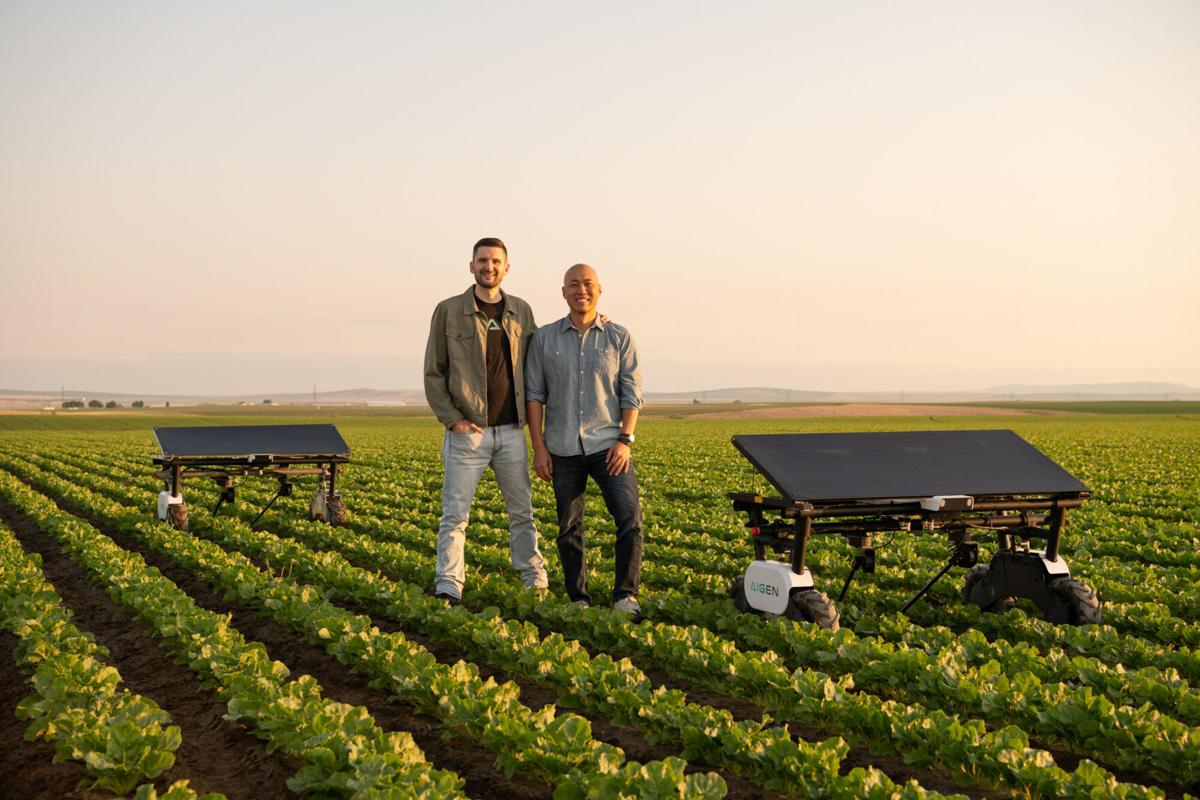· 9 min read
In the world of agriculture, a new era is dawning—one that holds the promise of ensuring the long-term revitalization, viability and resilience of our agricultural lands. This powerful movement, known as regenerative agriculture, is not just another fleeting trend but a transformative approach with the potential to revolutionize our food system and heal the wounds inflicted upon our planet.
Figure 1.

Source: Ivan Bandura
Cultivating change: the promise of regenerative agriculture
It’s no secret that our current food system is deeply flawed, burdened by a myriad of issues ranging from food insecurity to environmental degradation and biodiversity loss. Climate change has unleashed unprecedented challenges upon agriculture, from floods, fires and droughts to dwindling resources. As climate patterns become increasingly unpredictable, the need for innovative solutions has never been clearer. But amid the doom and gloom lies a glimmer of hope—regenerative agriculture. The potential of regenerative agriculture is immense. It not only enhances soil health but also sequesters gigatons of carbon, bolsters farm profitability, enriches nutrient density, fosters biodiversity, combats runoff and erosion and champions climate mitigation, adaptation and resilience. A transition to regenerative agriculture could be one of the most significant changes to agriculture in the 21st century.
With roots dating back centuries, regenerative agriculture has gained prominence in recent decades and has particularly surged in popularity over the past five years, capturing the attention of farmers, researchers, and corporations alike. Defined by its philosophy of nurturing ecosystems and working in harmony with nature, regenerative agriculture emerges as an alternative vision of farming—one that fights the climate crisis, produces healthier food, protects the environment, and revitalizes rural communities.
What is regenerative agriculture?
There is a lack of consensus on a specific definition of regenerative agriculture. Previous attempts to differentiate between regenerative, organic, and other alternative agricultural practices have been challenging. At its core, regenerative agriculture is not a one-size-fits-all system but a versatile blend of principles and practices. It encourages us to think of our farms as dynamic ecosystems, embracing the uniqueness of each landscape. Regenerative agriculture operates on a philosophy that transcends mere mitigation–it is a catalyst for restoration.
Regenerative agriculture principles encompass practices like cover cropping, no-till farming, composting, agroforestry, alternative pest management, use of solar panels, and more. In essence, regenerative agriculture seeks to rehabilitate and enhance the entire ecosystem of the farm, placing a premium on soil health and minimizing environmental impacts. The Rodale Institute describes the approach as “improving the resources it uses, rather than destroying or depleting them.” This dynamic approach goes beyond conventional farming, acknowledging the interconnectedness of nature and working harmoniously with it.
Challenges of regenerative agriculture
The transition to regenerative agriculture is not without its challenges, which include financial constraints, lack of technology knowledge, and potential conflicts with conventional agricultural systems, among other hurdles. Overhauling farming systems is a gradual and continuous process that may span several years, demanding persistence and long-term commitment. Unlocking the potential of regenerative agriculture requires a multi-faceted approach, encompassing new technologies, cost reduction strategies, practical business models, partnerships, policy changes, and innovative financing tools.
Policy support for regenerative agriculture
With a significant allocation of $20 billion of the $750 billion Inflation Reduction Act of 2022 (IRA), the IRA aims to bolster agricultural conservation, providing capital and resources to support farmers in adopting climate-friendly practices. Unlike the past, where conservation was has taken a back seat, the IRA prioritizes programs like the Environmental Quality Incentives Program, Regional Conservation Partnership Program, Conservation Stewardship Program, and Agricultural Conservation Easement Program, ushering farmers toward sustainable practices for mitigating greenhouse gas emissions and enhancing carbon sequestration. Notably, the IRA dedicates $300 million to quantifying carbon sequestration and conservation outcomes, harnessing field-based data for assessment and fostering the development of novel markets. Central to this transformative approach is the establishment of mechanisms enabling farmers to generate income by delivering environmental benefits. While a credible and trusted market infrastructure must first be established to ensure equitable compensation in these new markets, this development is a key step towards enabling farmers to be paid for their positive contributions and bolstering the economic viability of transitioning to regenerative agriculture.
In March 2023, a significant milestone was reached with the re-introduction of the Agriculture Resilience Act (ARA) in Congress, potentially heralding a profound transformation in our agricultural landscape. Departing from traditional norms, the ARA intricately weaves climate adaptation and mitigation strategies into its fabric, with a keen focus on the challenges faced by small and medium-sized farmers. Historically, the prevailing agricultural narrative has equated progress with increased production. However, the ARA challenges this notion, emphasizing the urgency of shifting towards sustainable, resilient and nourishing agricultural systems. It astutely recognizes the intricate web linking food production, environmental dynamics, the pressing specter of climate change and the well-being of humanity itself.
What sets the ARA apart is its resolute commitment to addressing the vulnerabilities of farmers who are disproportionately impacted by the intensifying effects of climate change. The ARA’s scope is expansive, encompassing a multitude of dimensions, including sustainable nutrition science, the preservation of agricultural landscapes, seamless integration of renewable energy sources, and an unwavering resolve to reduce food loss and waste. Its vision is aligned with the growing consensus among scientists, policymakers and advocates, underscoring the paramount need for a collaborative interdisciplinary approach.
Government policies like the IRA and ARA play a pivotal role in shaping agricultural practices. Aligning government policies to incentivize regenerative farming is crucial. Public funds and support will be needed to encourage farmers to adopt regenerative techniques while simplifying the process for farmers to access government-funded support.
The role of innovation and the private sector
Recent technological and corporate developments in regenerative agriculture are promising steps in pushing forward regenerative agriculture goals. Technologies such as agricultural robotics are addressing key aspects of soil health, carbon sequestration and chemical reduction. Seattle startup, Aigen is creating one such game-changing agricultural technology called Aigen Element. Their autonomous robotics platform, powered entirely by solar and wind energy, is set to revolutionize farming practices. With their proprietary, quantized AI, Aigen’s Element service aims to reduce fossil fuel usage, provide real-time field insights, and optimize efficiency, all while minimizing costs. Debuting over 20,000 acres of U.S. farmland in 2024, Aigen is paving the way for a greener and more prosperous future through regenerative agriculture practices.
Figure 2. Aigen co-founders, Rich Wurden (left) and Kenny Lee

Source: Peter Bohler
Effective scaling of regenerative agriculture relies on strong collaboration both within and between different sectors and value chains. Leading the charge for regenerative agriculture, major corporations are making bold commitments to revolutionize their supply chains and drive innovation. Nestlé is investing in regenerative agriculture practices for wheat farms in its DIGIORNO® supply chain, spanning over 100,000 acres and accelerating the transition to sustainability. Moreover, Nestlé is actively collaborating with its U.S. tomato supply chain to validate regenerative agriculture practices, signaling its commitment to procure ingredients from farmers embracing regenerative methods. ADM, backed by a $90 million grant from the United States Department of Agriculture, is significantly expanding its regenerative agriculture program to provide more North American producers with financial and technical support, enabling them to earn additional revenue. PepsiCo has set its sights on deploying regenerative farming practices across 7 million acres by 2030. Cargill plans to transition 10 million acres of North American farmland, while Walmart aims to advance regenerative agriculture practices across 30 million acres in the Midwest. Notably, Land O’ Lakes’ Truterra division has already awarded nearly 300 farmers with over $5 million for sequestering 260,000 tons of carbon. Meanwhile Indigo is working closely with 250 farmers in Minnesota, offering credits for carbon sequestration and ensuring farmers retain 75% of the revenue.
These efforts along with collective dedication from industry giants like Danone, Kerigg, Microsoft, Grupo Bimbo, General Mills, Target, Unilever, Mars, Hormel and Microsoft underscores the pivotal role of large industry players in reshaping the future of our food system and driving regenerative practices to new heights.
Collaborative efforts among industry stakeholders are flourishing, driving the momentum behind the transition to regenerative agriculture. A recent surge in collaborations underscores this commitment, with key players like Bayer, Walmart, PespiCo, Cargill and John Deere making significant strides. Bayer's innovative Carbon Program, integrated with the ForGround platform, empowers farmers to not only embrace regenerative practices but also generate revenue while championing overall sustainability within their farming operations. PepsiCo and Walmart have forged a noteworthy partnership, pledging $120 million over seven years to bolster soil health and water quality improvement initiatives among U.S. and Canadian farmers. Cargill and John Deere have teamed up through Cargill’s RegenConnect initiative, which extends financial incentives to farmers to adopt regenerative practices and is complemented by the integration of John Deere's precision agricultural technology and Operations Center for implementation support.
The role of financial incentives
The pivotal role of financial incentives and capital accessibility in driving this transition cannot be overstated. For a considerable number of farmers, economic limitations have posed substantial barriers to adopting regenerative agricultural practices. The shift to such practices often entails notable financial risks. What is imperative is a collective endeavor to distribute these costs across diverse stakeholders, including value chain enterprises, governmental bodies, investors, and philanthropic organizations. Creative strategies, encompassing debt instruments, insurance options, and supply-chain financing, stand poised to render this transition not only economically feasible but also financially advantageous for those involved.
Conclusion
To usher in transformative change, a deeper understanding and constructive discourse about regenerative agriculture are paramount. While not every farmer can implement all regenerative principles immediately, progress can be made step-by-step over time. Embracing innovative technologies, fostering partnerships, and integrating regenerative practices can lead to harmonious coexistence with natural systems and the attainment of long-term sustainability objectives.
The engagement of governments, industry stakeholders, farmers and consumers is of the utmost importance. Governments have a pivotal role in offering supportive policies and incentives for regenerative agricultural practices. Collaborative partnerships, encompassing financial, agronomic and social initiatives alongside industry leaders, hold the potential to drive significant change and empower farmers with essential resources, tools and technologies. Finally, consumers have a strong role in driving demand for regeneratively produced food.
According to Dr. Kristine Nichols, a distinguished authority in soil microbiology and regenerative agriculture, a mere 1.5% of the 900 million arable acres in the U.S. is dedicated to regenerative farming. Taking a broader global perspective, the Sustainable Markets Initiative (SMI) has revealed that only 15% of the world’s agricultural expanse had embraced regenerative approaches. The organization has indicated that the ambit of regenerative practices must encompass 40% of global farmland by 2030 to effectively meet the objectives outlined in the 2015 Paris Climate Agreement, which aims to curtail global warming to 1.5 degrees Celsius. These statistics serve as a resounding call to urgently embrace comprehensive and sweeping changes in our approach to agriculture and sustainability.
The equilibrium we strike between human welfare, productivity, profitability and environmental stewardship will undoubtedly shape the destiny of our planet. The collective responsibility rests on each individual to contribute towards shaping a resilient and flourishing world for generations to come. By acknowledging the significance of regenerative agriculture and taking united action, we can embark on a path towards a more vibrant, ecologically sound future for our food system and the entire planet.
illuminem Voices is a democratic space presenting the thoughts and opinions of leading Sustainability & Energy writers, their opinions do not necessarily represent those of illuminem.






